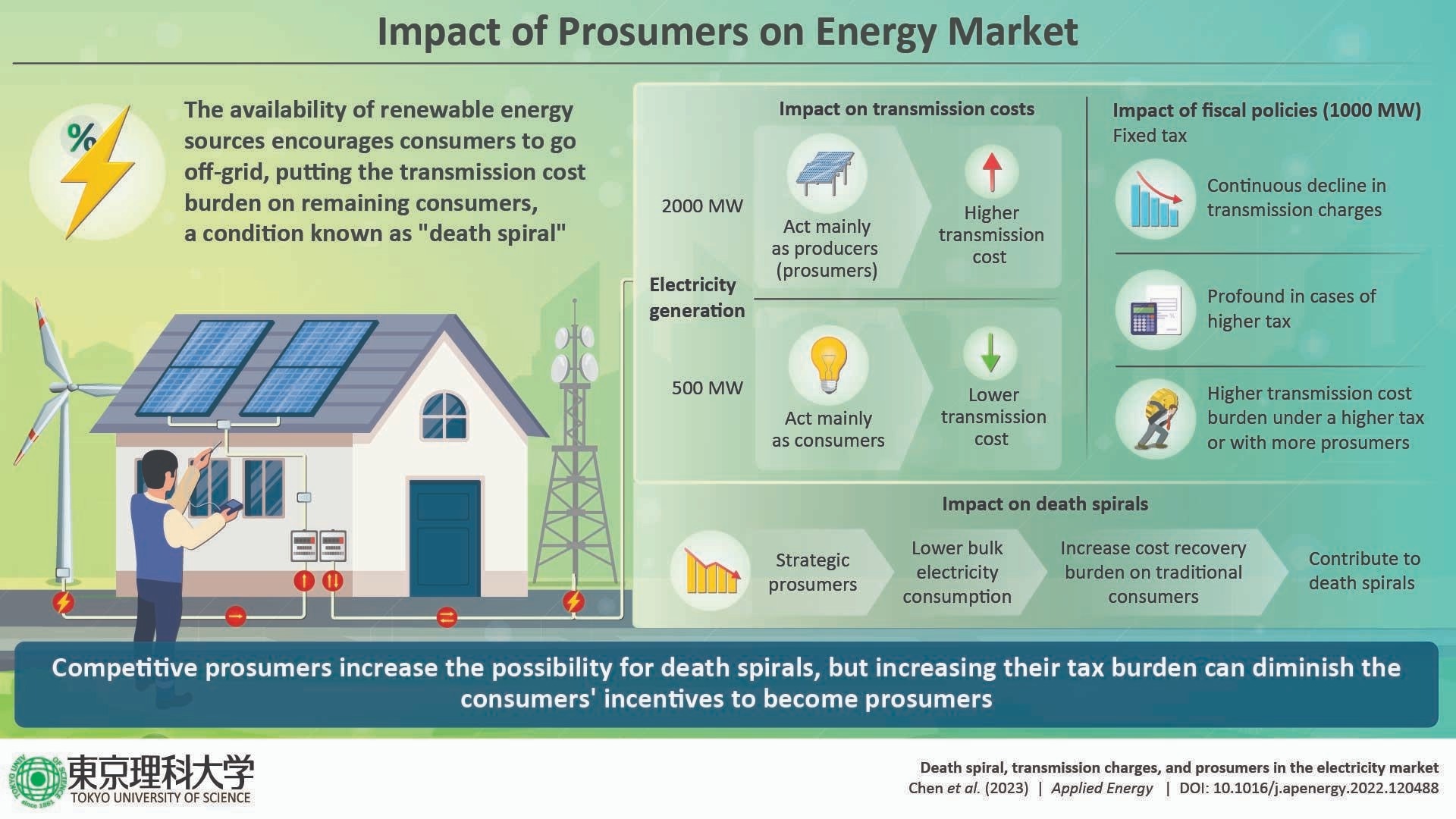Using mathematical modeling, scientists from Japan and the United States shed light on the unforeseen consequences of distributed renewable energy resources.

Image Credit: Tokyo University of Science
By encouraging customers to generate their own electricity and become “prosumers,” distributed renewable energy resources are anticipated to shift the cost of energy transmission to traditional consumers, creating a “death spiral.”
According to a new study, the transmission charge does not always increase as more prosumers enter the electricity market. Strategic prosumers, on the other hand, promote death spirals, which can be minimized by putting tax regulations on their electricity consumption.
Climate change mitigation efforts have contributed to an increase in renewable energy production via solar panels, windmills, and other technologies. As a result, consumers have evolved into “prosumers,” capable of creating their own electricity. While prosumers’ use of distributed renewable energy strengthens the energy sector, their reduced reliance on the bulk electricity market has resulted in new and unintended consequences.
These avenues are expected to push conventional consumers to become prosumers, making it difficult to recover lumpsum infrastructure investments and recurring costs. As a result, energy transmission charges will be shifted to traditional, grid-dependent consumers.
The creation of a vicious cycle known as the “death spiral” would force bulk energy producers to raise the transmission charge, impacting both market and consumer balance. Despite these reservations, the impact of prosumers on transmission charges and the market has not been studied.
This issue was recently addressed by a team of researchers guided by Professor Ryuta Takashima of the Department of Industrial and Systems Engineering at the Tokyo University of Science in Japan. Their findings were published in the Applied Energy journal on February 15th, 2023. Professor Yihsu Chen of the University of California, Santa Cruz, and Professor Makoto Tanaka of the National Graduate Institute for Policy Studies (GRIPS) in Japan contributed to the study.
In their study, the researchers modified Benjamin F. Hobbs’ linear complementarity model of Nash-Cournot competition to simulate bilateral markets.
We explicitly considered the energy transmission network and optimization of various entities in the electricity market—consumers, prosumers, producers, and independent system operators. We assumed that a prosumer, in a perfect or imperfect competition, chooses her own method of energy production and consumption.
Ryuta Takashima, Professor, Department of Industrial and Systems Engineering, Tokyo University of Science
The PATH complementarity solver was utilized by the researchers to solve the market equilibrium problem they constructed utilizing the Karush-Kuhn-Tucker conditions from the previously discussed optimization problems.
Contrary to popular perception, the researchers discovered that the transmission charge does not always increase with the number of prosumers. Instead, prosumers behave like consumers when they generate less electricity (e.g., 500 MWh), which lowers the transmission charge. However, when prosumers generate a significant amount of renewable energy (for example, 2000 MWh), the transmission charge rises as expected.
The researchers also discovered that the existence of strategic prosumers, who reduce their energy consumption from the bulk electricity market in the midst of imperfect competition, increases the chance of death spirals. Based on these data, the researchers proposed that a per-MWh tax on prosumer electricity consumption from the bulk market could lower the likelihood of death spirals developing.
In summary, the study sheds light on the inherent relationship between the fraction of renewable energy sources and the amount and behavior of prosumers, as well as their combined impact on transmission charges.
In light of the growing concern over death spirals in energy market, these findings add to the ongoing discussion about transmission costs in the presence of prosumers and shed light on death spirals. Moreover, since it is expected that such a phenomenon might occur in Japan in the future, the current research can be applied to the Japanese electricity market to offer suggestions for its aversion.
Ryuta Takashima, Professor, Department of Industrial and Systems Engineering, Tokyo University of Science
Journal Reference:
Chen, Y., et al. (2023). Death spiral, transmission charges, and prosumers in the electricity market. Applied Energy. doi.org/10.1016/j.apenergy.2022.120488.